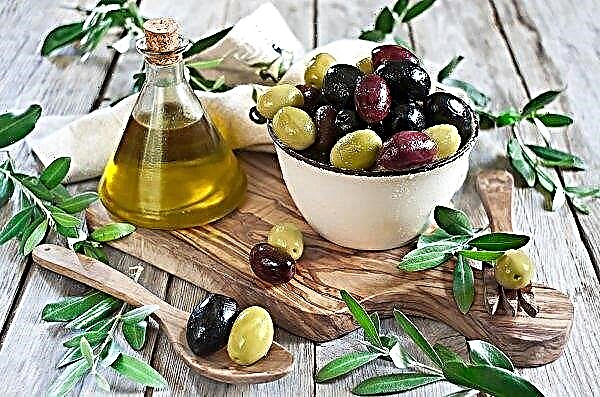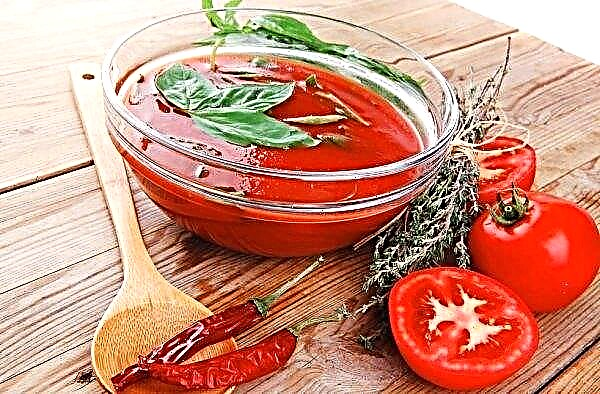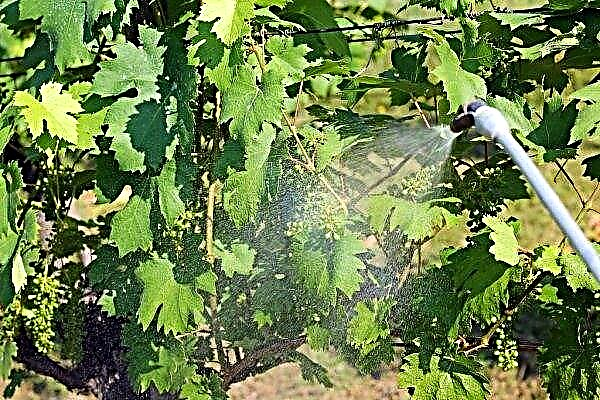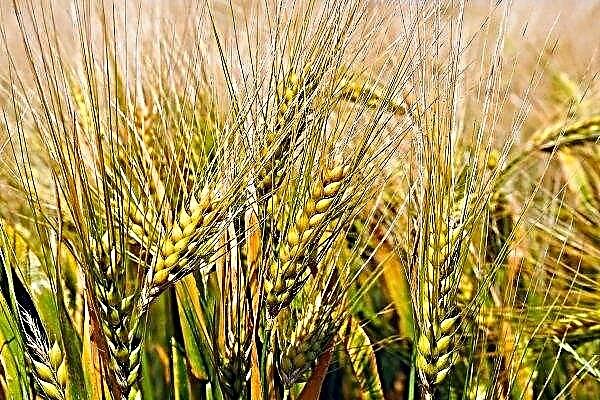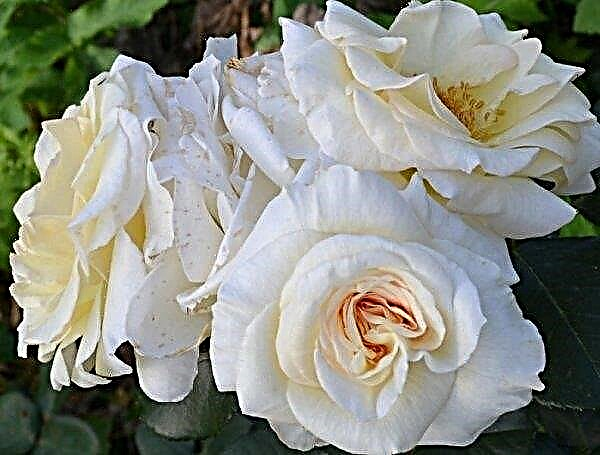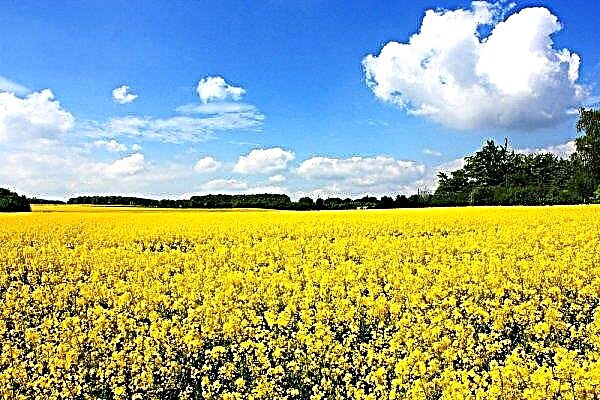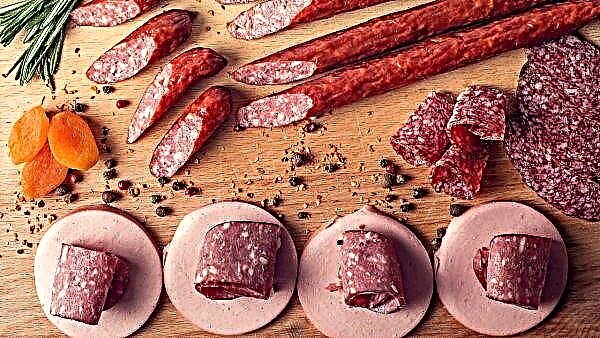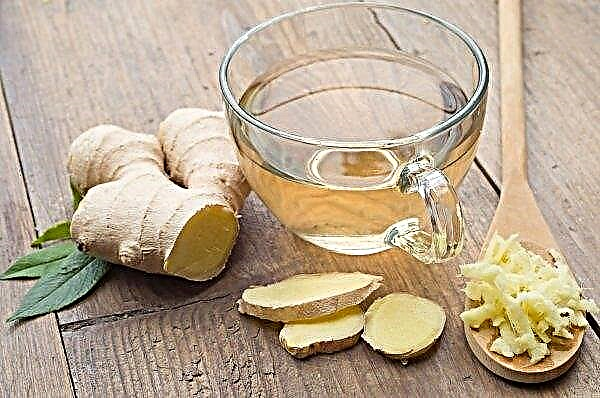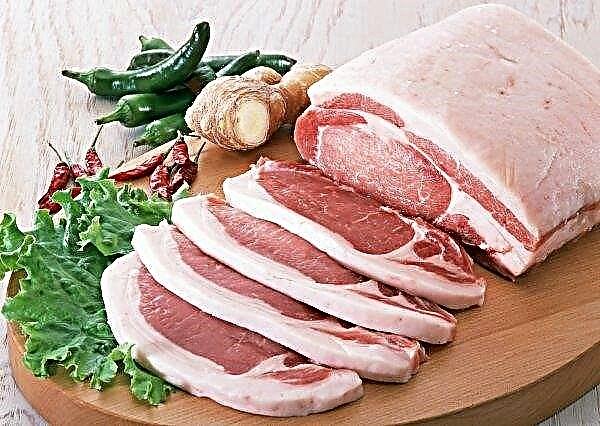The Urals is a region with difficult climatic conditions, so growing heat-loving crops there is associated with a number of difficulties. The proposed material will focus on how to grow delicate vegetables such as cucumbers in greenhouses in the Urals.
Suitable varieties
The climatic conditions of the Urals can hardly be called optimal for heat-loving cucumbers, but a wide variety of varieties of this vegetable allows you to choose those that take root in this region.
Did you know? Homeland of Cucumbers — northern foothills of the Himalayas.
Taking into account the short warm summer period, self-pollinated crop varieties of early and medium ripeness are most suitable for greenhouse cultivation, such as:
| Grade name | Ripening period | Characteristic |
| Gorgeous Five F1 | early ripeness |
|
| Cupid F1 | early ripeness |
|
| Emelya F1 | medium ripeness |
|
| Masha F1 | early ripeness |
|
| Black Sea F1 | early ripeness |
|
| Ekol F1 | medium early ripeness |
|
| Emerald Family F1 | early ripeness |
|
Planting dates
Given the difficult climatic conditions of the Urals, in determining the time of planting of cucumbers, one should take into account the long-term (until the very beginning of summer) threat of frost, as well as the risk of their occurrence in the second half of August.
Based on this:
- Plant seedlings in the soil in the greenhouse from the film in the last days of May.
- Planting seedlings in a greenhouse from a film using manure should be done in early May.
- Planting cucumbers in the soil in a glass greenhouse is carried out on April 25–28.
Important! The indicated dates for planting cucumber crops are approximate, for reference. When making the final decision on planting, you need to focus on weather conditions in a specific area of the Ural region.
Soil requirements
Cucumber crops are extremely whimsical regarding the soil in which they grow, therefore the soil must be prepared taking into account the following requirements:
- The soil should be loose and have good breathability (which should be maintained all the time growing cucumbers).
- The soil should be well enriched with organic matter and with moderate acidity.
- The best option for the soil is loam, in which salt is 15 g per liter, also a good option is a mixture of garden and garden soil in a ratio of 1 to 1.
- Fertilizing the earth with complex fertilizers for cucumber crops (according to the instructions).
- The soil should be warmed up to + 20 ... + 24 ° С.
Planting and growing seedlings
Growing cucumbers in seedlings allows you to accelerate the growth of culture by 25 days. Seedlings are grown in containers specially designed for this.

The algorithm for growing seedlings is as follows:
- Seeds for their heating are poured with boiled water and after 2-3 hours they are pickled in a solution of potassium permanganate.
- Then for 11 hours the seeds are soaked in water heated to 40 ° C.
- After this period, the seeds are treated with copper sulfate (it is also possible to use zinc sulfate or boric acid) at the rate of 0.05 g of substance per 1 liter of water.
- Seedlings for 20-25 days are left in a well-lit room. If necessary, use of artificial light sources.
- With the advent of one leaf (this, under favorable conditions, occurs 5 days after germination), the first recharge is done (Calculation of feeding: for 5 plants, 200 ml of the composition).
- Repeated feeding before transplanting to the ground is made after 4 days.
Important! A day before recharge, in order to avoid root burns, the plant should be watered.
Planting seedlings in the ground
Transplanting prepared seedlings into the soil is as follows:
- 14 days before the intended disembarkation, seedlings should begin to be prepared for new environmental conditions awaiting it: in calm and sunny weather, containers with seedlings are taken out into the open air for some time, each time increasing the time spent on the street.
- If it is planned to grow cucumbers in a glass greenhouse in soil that does not contain manure, then a transplant is scheduled for approximately May 5; if soil with manure - on April 25th. In a film greenhouse into the ground with manure - from May 1.
- A sign of seedling readiness for transplantation is the presence of 4 to 5 leaves on the plant.
- For preventive purposes, on the eve of planting, the seedlings are treated with special formulations (for example, Epin).
- Planting on a site in a greenhouse should be carried out taking into account crop rotation, in those places where there used to be tomatoes, eggplant, cabbage and onions; Avoid places where squash, pumpkin and squash were grown.
- The selected area is leveled, loosened, freed from plant debris and weeds.
- Wells for landing are made 20 cm from each other, between rows - 40 cm.
- Pits are abundantly watered with cold water, 2-3 seeds are laid in them and filled up.
- Then the garden is watered and in order to avoid intensive evaporation of moisture, it is covered with a covering material (for example, agrospan).
- After 5–7 days, with the appearance of the first shoots, the covering material is removed.

Follow-up care
Care after planting seedlings is simple, but its rules need to be considered in detail.
Watering
Given the hygrophilicity of the culture, it is necessary to water the cucumbers in a timely manner. Before flowering, watering is done once every 5-6 days, then once every 2-3 days. On hot days - twice, with natural precipitation watering is not required. Water heated in the sun is used. To avoid damage to the root system of young cucumbers during irrigation, the use of a hose is not recommended.
Important! Optimal temperature for cucumbers in a greenhouse — +18…+22°WITH.
Fertilizer application
Top dressing is done twice or thrice per season. Fertilizers, as a rule, are prepared according to folk recipes, using onion husks, bread and yeast. Nettle infusion is also useful - chopped nettle is placed in a large container, filled with water and infused for three days. Before use, a liter of infusion is diluted in 10 liters of water. Consumption: for one plant - 2-3 liters of solution.

Soil loosening
Periodic, to maintain soil friability and air conduction. When loosening, care is necessary so as not to injure the roots of the cucumbers.
Did you know? Cucumber — one of the oldest vegetable crops, it has been cultivated for over 6 thousand years.
Pinch
Made using clean, sharp scissors. Leaves growing down and side stems, as well as the lower beginnings of flowers, are removed.
Pest and Disease Control
Despite the fact that cucumber varieties have good resistance to diseases and pests, the danger of this kind of them, nevertheless, lies in wait.
Consider the main diseases of cucumbers and methods of treatment:
- Powdery Mildew In the fight against the disease, colloidal sulfur powder treatment is used - 20-30 g of substance per 10 m².
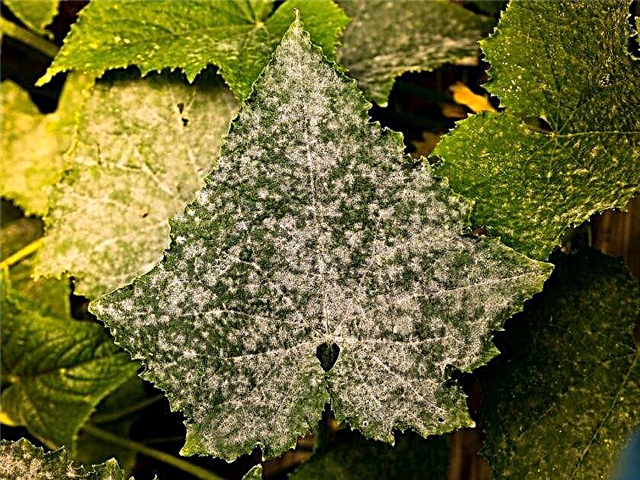
- White rot. Affected plants are destroyed by burning, the soil is treated with a solution consisting of 2 g of copper sulfate and 10 urea per 10 liters of water.

- Cladosporiosis. The culture is treated with 15% Bordeaux fluid. As a further prevention - top dressing with potassium sulfate.

Pests and means of controlling them that are hazardous:
- Gourd aphids. Used tablet preparation "Inta-vir" or tobacco infusion.
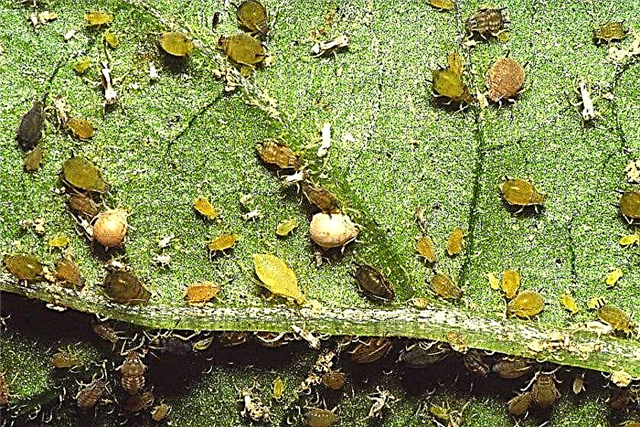
- Spider mite. Spraying with garlic or onion infusion - 0.2 liters per 10 liters of water.

- Slug - sprinkling of beds with tobacco or ash; it is also possible to set saucers with beer between landings - in the morning insects caught in such a trap are thrown out.

Harvest dates and storage features
The collection time of cucumbers depends on the ripening time of the variety, as follows:
- Gorgeous Five F1 - ripening for 38–42 days from seedlings.
- Cupid F1 - ripening for 37-40 days from the appearance of full shoots.
- Emelya F1 - ripening in 40 days from planting.
- Masha F1 - ripening for 36 days after germination.
- Black Sea F1 - fruiting after 46-50 days from the appearance of seedlings.
- Ekol F1 - ripening for 42–45 days from the appearance of seedlings.
- Emerald Family F1- ripening for 40–43 days from the appearance of seedlings.
Important! Optimal for storage of cucumbers is a temperature of +6°C to + 8°C at humidity 85–95%.
Fresh cucumbers, and especially greenhouse ones, are difficult to store. It is possible to preserve greens for a longer time with the help of lowered temperature and high humidity, which prevents the fruit from withering. For storage, only fresh cucumbers are taken, which were without cooling for up to a day. The easiest way to store is in the refrigerator.

Consider the recommendations for storing greens in a cooling device:
- Using napkins. Each cucumber is wrapped with a paper napkin and then placed in a bag with ventilation holes. Then the package is placed in the compartment for storing fruits and vegetables.
- In water. A shallow capacity of 2 cm is filled with water, then cucumbers are placed there with long tails (this is a prerequisite) down. The container with the contents is sent to the refrigerator, the water changes daily. Due to the fact that cucumbers will replenish the lost moisture with water from the tank, they can be stored for 3-4 weeks.
- In egg white. The best greens are selected, washed with water and dried. Dried fruits are dipped in egg white, laid out on a lattice surface and left until the protective film dries. Then they are placed in a container (made of wood or plastic) and sent to a refrigeration unit. Shelf life is 30–40 days, but on the eve of consumption, cucumbers will have to be washed well to remove egg white.
- With vinegar. Vinegar is poured into the pan so that it covers its bottom by 1 cm. From the top, any grate or sieve is placed in the tank, but so that the cucumbers laid on it do not come into contact with the liquid. Cucumbers are laid out, the pan is covered with a lid to avoid evaporation of vinegar vapors. Thus, a special gas shell will be created around Zelentsy. A container of contents is sent to the refrigerator (cool basement). Shelf life - from one to two months.
Important! It is imperative to periodically check the cucumbers sent for storage in order to remove damaged fruits in time.
Storage in the cellar. Here are your secrets:
- In wooden boxes or trays, the film spreads, the fruits are laid and covered with a damp cloth on top. This method provides the desired humidity and delays the evaporation of moisture from cucumbers.
- A glass jar (s) is pierced in an oven or air grill. Its bottom is covered with grated or finely chopped horseradish and laid on top previously washed with boiled water and dried cucumbers. The filled container is closed with a scalded polyethylene lid and sent to the basement, in place, without access of light.

A few general storage recommendations:
- You should not tightly wrap cucumbers in a film - this will stop the access of fresh air and will provoke the process of decay.
- When stored next to cucumbers there should not be apples, bananas, pears, melons, tomatoes, peaches and apricots. Ethylene, secreted by these fruits, provokes a biochemical process unnecessary to cucumbers.
- Thin cucumbers are unsuitable for storage.
- In order to maximize the shelf life of cucumbers, it is necessary to limit the evaporation of moisture.
The main thing when growing greenhouse cucumbers in difficult Ural conditions is the right choice of a suitable cultivar and careful care. Then a generous and tasty harvest of Ural cucumbers is provided.







